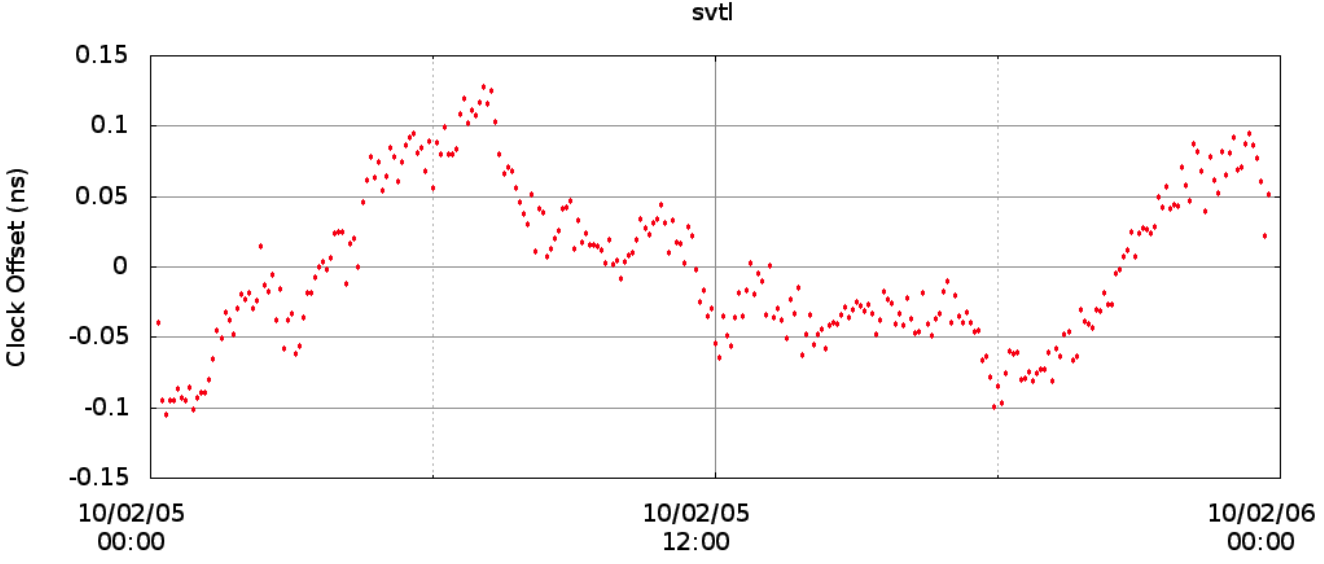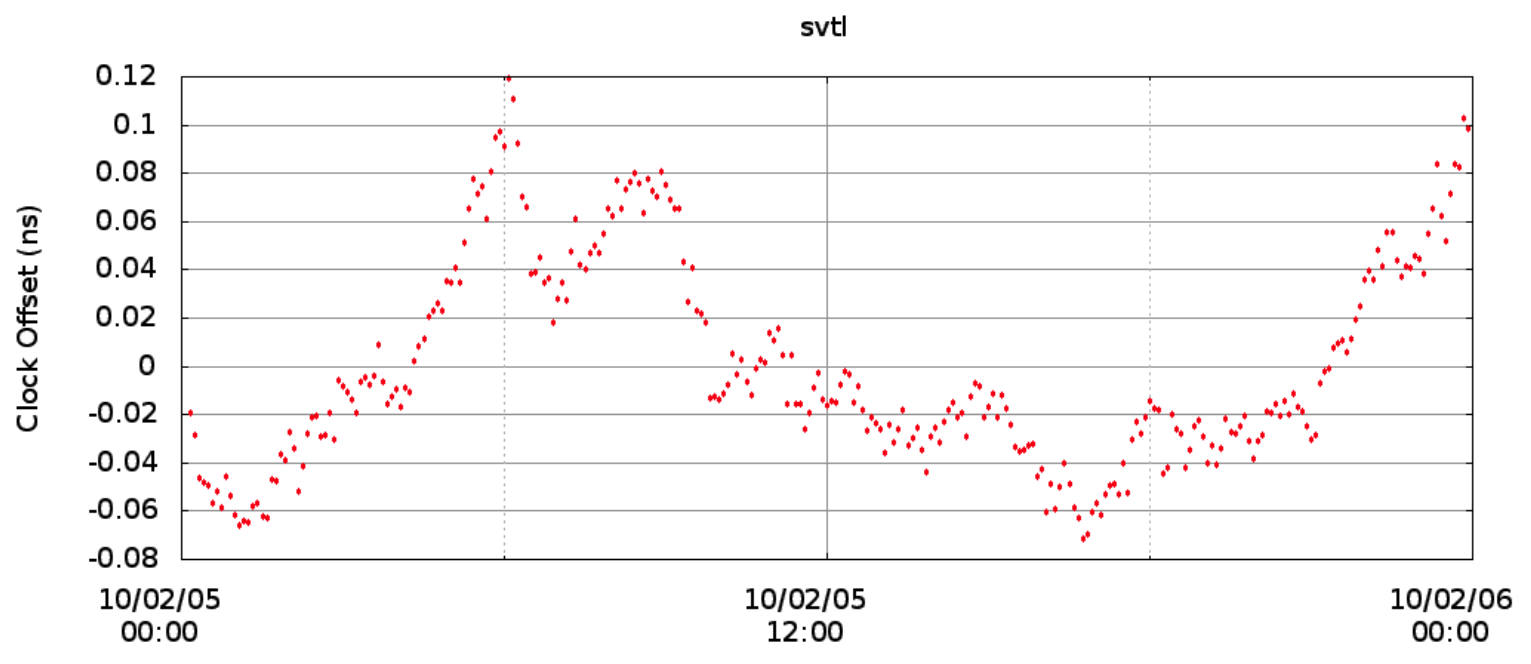Precise Point Positioning with GLONASS: 18 satellites now available
February 9th, 2010 by Ricardo PírizThe Russian navigation system GLONASS seems to be in very good shape again. Since February 4, eighteen (18) satellites are continuously available for dual-frequency Precise Point Positioning (PPP). Now it is possible for example to monitor the behaviour of a very stable atomic clock connected to a GNSS receiver, using GLONASS measurements exclusively, without GPS.
We have processed in PPP data from the svtl station near Saint Petersburg in Russia. This station is connected to a hydrogen maser. Station measurements were taken during February 5. The GLONASS orbit and clock products needed for PPP have been generated internally and are available in magicGNSS. The following figure shows the resulting PPP pseudorange (code) and phase residuals, for the 18 GLONASS satellites.
The resulting station clock is shown below. A parabola has been removed in order to show the stochastic clock behavior. For comparison, the PPP solution using GPS only is also included.
This experiment shows that GLONASS PPP can be used not only for cm-level positioning, but also for sub-nanosecond clock stability monitoring and synchronization applications.






